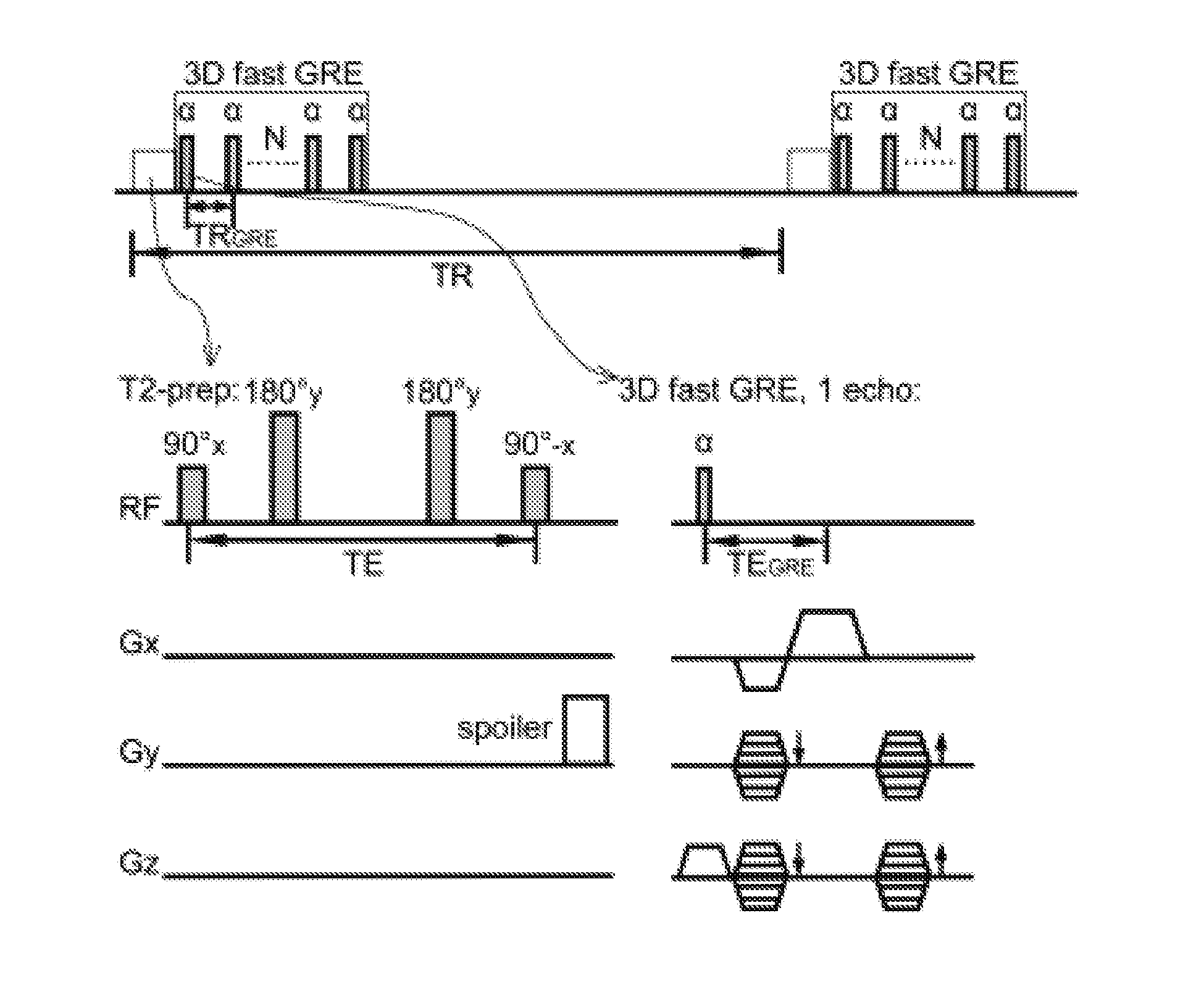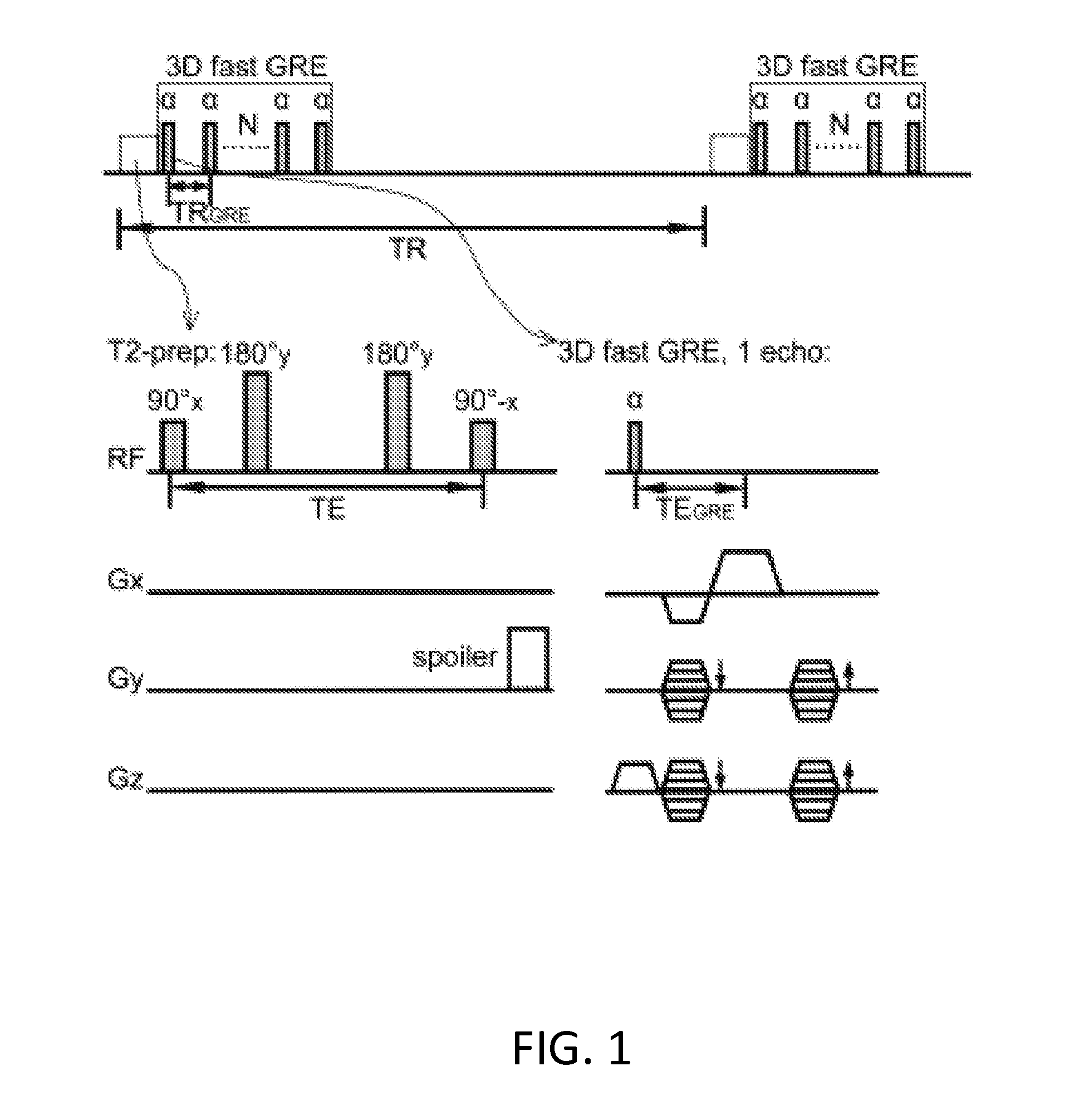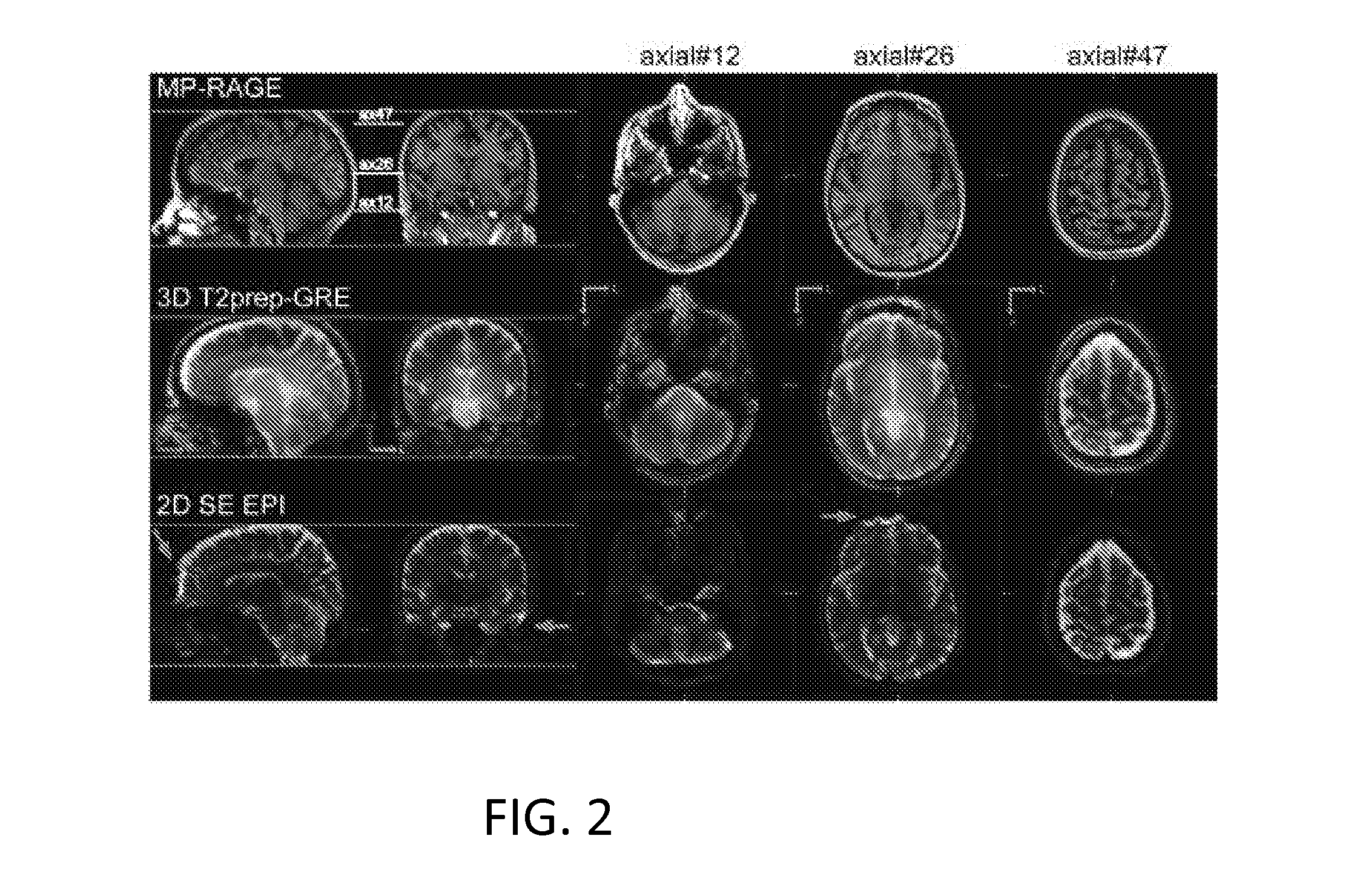Functional Magnetic Resonance Imaging (fMRI) Methodology Using Transverse Relaxation Preparation and Non-Echo-Planar Imaging (EPI) Pulse Sequences
a magnetic resonance imaging and pulse sequence technology, applied in the field of magnetic resonance imaging, can solve the problems of geometric distortion and signal dropout, scale with the square of field strength, limit the acquisition efficiency and temporal resolution of fmri, etc., to suppress inflow effects, short echo time, and low-high (centric) phase encoding
- Summary
- Abstract
- Description
- Claims
- Application Information
AI Technical Summary
Benefits of technology
Problems solved by technology
Method used
Image
Examples
example
[0032]An exemplary implementation of the present invention is described herein, in order to further illustrate the present invention. The exemplary implementation is included merely as an example and is not meant to be considered limiting. Any implementation of the present invention on any suitable subject known to or conceivable by one of skill in the art could also be used, and is considered within the scope of this application.
[0033]Five healthy human subjects, who gave written informed consent before participating in this Johns Hopkins Institutional Review Board (IRB) approved, Health Insurance Portability and Accountability Act (HIPAA)-compliant study, were scanned on a 7 T Philips MRI scanner (Philips Healthcare, Best, The Netherlands). A 32-channel phased-array head coil (Nova Medical, Wilmington, Mass.) was used for RF reception and a head-only quadrature coil for transmit. Two rectangular pads (23×10×2 mm) filled with high dielectric constant materials were placed between t...
PUM
 Login to View More
Login to View More Abstract
Description
Claims
Application Information
 Login to View More
Login to View More - R&D
- Intellectual Property
- Life Sciences
- Materials
- Tech Scout
- Unparalleled Data Quality
- Higher Quality Content
- 60% Fewer Hallucinations
Browse by: Latest US Patents, China's latest patents, Technical Efficacy Thesaurus, Application Domain, Technology Topic, Popular Technical Reports.
© 2025 PatSnap. All rights reserved.Legal|Privacy policy|Modern Slavery Act Transparency Statement|Sitemap|About US| Contact US: help@patsnap.com



